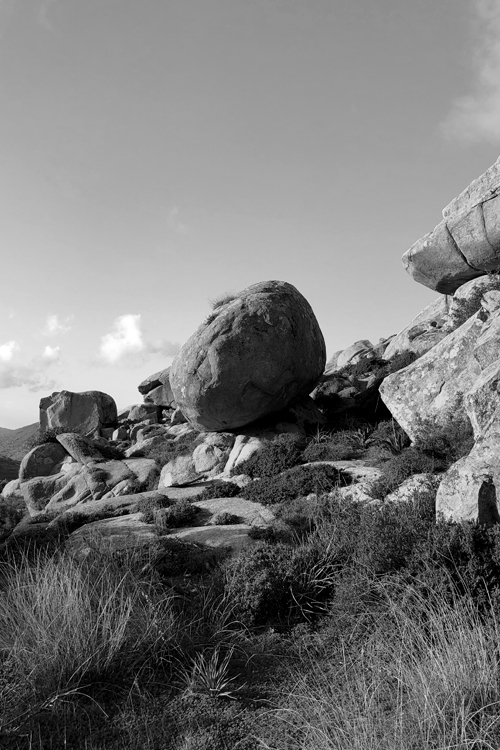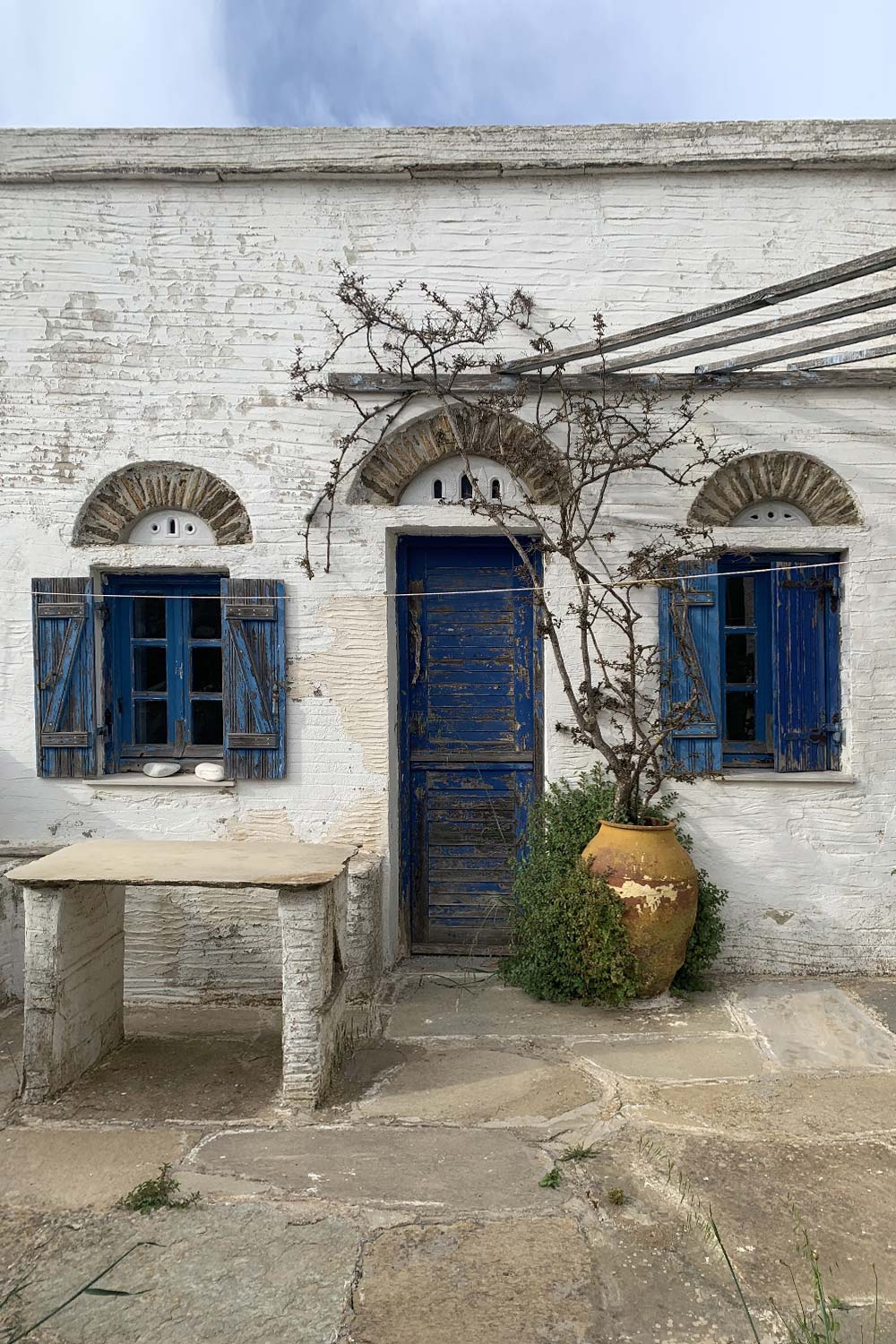The outdoor museum island

Tinos was and still is an island known for its religious significance. In recent years, the island has developed in many aspects, offering visitors numerous reasons to visit. Wild nature, as you’ve never witnessed, consists of rock formations mysteriously eroded, running waters, beautiful lunar landscapes offering the perfect backdrop for more that 60 villages, scattered throughout the island. A backdrop that changes every hour, day, week and month of the year, depending on the weather, resulting in dramatic changes of colors, smells and atmospheres.
This is a section that we keep getting updated as new things to do are discovered, so make sure to check every once in a while for new tips.


VILLAGES
The villages, adorned with picturesque Cycladic architecture, beckon visitors to stroll amidst their charming streets. Discover quaint squares adorned with fountains and inviting cafes strategically positioned to shield against the island’s notorious north winds, particularly prevalent in August (known as meltemi). Pause at these idyllic spots to savor a traditional Greek coffee or indulge in delectable mezes accompanied by homemade raki, all while engaging with the warm and welcoming locals who epitomize the island’s hospitality.
Venture further to encounter skilled artisans weaving intricate baskets, crafting candles, and proudly showcasing their locally sourced treasures, including honey, dried figs, and other regional delicacies.
Immerse yourself in Tinos’ rich cultural tapestry by exploring its diverse museums. From the archaeological wonders housed within the Town of Tinos to the Museum of Marble Crafts and Tinian Artists in Pyrgos, each venue offers a glimpse into the island’s storied past. Marvel at exquisite marble sculptures crafted by esteemed Neohellenic artists such as Giannoulis Halepas, Dimitris Filippis, the Fitali brothers, Lazaros Sochos, and Georgios Vitalis, whose enduring legacies continue to inspire. Delve deeper into their artistry by participating in marble sculpture workshops, where the secrets of their craft are unveiled.
DOVECOTES
Peristeriones (as they are called in Greek) are a feature of the Tinos landscape and considered some of the most impressive works of art in the Cyclades. There are over 600 dovecotes (houses for domesticated doves and pigeons) made of slate, stone and limestone and covered with lithographs.
ACTIVITIES
Most villages are conveniently linked by scenic hiking trails, making it advisable to pack sturdy ankle-high hiking shoes, particularly as snakes inhabit the island. However, don’t let this deter you, as snakes typically avoid human contact and prefer to remain hidden. To enhance your hiking experience, consider downloading the “Anavasi Map” app, allowing you to purchase and access Tinos’ trail maps directly on your smartphone.
In 2022, a new “Via Ferrata” route was unveiled encircling the majestic “Exomvourgo” hill on Tinos. This thrilling path typically takes a few hours to traverse, rewarding adventurers with breathtaking 360-degree vistas of Tinos and its neighboring islands. To embark on this unforgettable journey, specialized equipment and a knowledgeable guide are essential. Booking the complete experience is made convenient through the “Tinos Outdoors” website
For thrill-seekers, Tinos offers adventures beyond hiking, including the exhilarating waves beckoning surf enthusiasts. Kolymbithra beach presents an ideal spot for renting surfboards and indulging in surf lessons, while the more experienced may prefer testing their skills at Livada Beach on windier days.
Additionally, adventurers can bring along climbing gear for a rewarding ascent up Exomvourgo’s rocky terrain, where numerous impressive routes await. Alternatively, bouldering enthusiasts will discover captivating rock formations aplenty in the scenic surroundings of Volax.
FOOD
Tinos is renowned for its exceptional culinary scene, offering a tantalizing array of dishes to delight every palate. One highlight is the Tinos Food Paths initiative, seamlessly blending gastronomic exploration with invigorating treks through the island’s picturesque landscapes. This annual event, held every May, has become a staple on the culinary calendar, drawing both locals and visitors from Athens and beyond.
In nearly every village, culinary gems await discovery, each offering its own unique flavors and atmosphere. While I’m happy to share our personal favorites here, I highly recommend embarking on your own culinary adventure across the island. There’s something truly special about uncovering hidden culinary treasures and creating your own unforgettable dining experiences amidst Tinos’ enchanting scenery.
KATSIKA STREET
On the vibrant street of Katsika, a tapestry of experiences unfolds, offering a diverse array of delights. Across from Katsika Store, the bustling hub of activity centers around “Sol,” where Vassilis and Michalis craft delectable breakfast treats such as cinnamon rolls, croissants, and wholesome jars alongside refreshing juices. But the culinary adventure doesn’t end there; their repertoire extends to crafting tantalizing cocktails sure to tantalize the taste buds.
Adjacent to Sol lies a charming local taverna overseen by Maria, where the aroma of freshly cooked daily specials wafts through the air. Here, patrons can savor traditional “meze” paired with invigorating sips of “raki,” adding a touch of authenticity to the culinary journey.
Further down the street, “Trela,” under the ownership of Carol, beckons with its collection of exquisite vintage furniture and quaint home accents, each piece telling a story of its own. And amidst this tapestry of offerings, a myriad of establishments awaits exploration: a chic hair salon, a bustling fruit and meat market brimming with freshness, an optical boutique offering stylish shades, a whimsical toy emporium, the indigenous craftsmanship of “Esiot” Greek sandals, and a Chinese eatery infusing local ingredients into its culinary creations, adding an intriguing twist to traditional flavors.
WINE
Did you know that Tinos produces extraordinary wine? You will find wineries that have won awards worldwide.
“The close relationship of Tinos with wine seems to date back to the old times. In the place where the icon of the Virgin Mary was found and the Church of the Evangelistria was built, there was a temple dedicated to Dionysus, a sample of the worship of the islanders for the “God of Wine”. Remains of the ancient sanctuary of Dionysus (pitharia) are today housed in the Archaeological Museum of Tinos. Viticulture and wine production has been the main agricultural activity of the locals throughout the centuries, with Tinos wine being praised by travelers of the Byzantine and Medieval times and resulting in an important export product of the 19th century. Almost every family had its own vineyards that were venerable. In the dark and cool courtyards – necessary spaces in the traditional Tinian house – the wine was stored in pots or oak barrels through which it was conveyed as an accompaniment to the family table. It always starred in the daily life of Tinians, sometimes as a dietary supplement, as a tonic right before hard work in the field and sometimes obsolete on special occasions {celebrations, weddings). The overall decline in agricultural activity has influenced the wine production for a long time but nowadays with the recognition of the winemaking potential of Tinos land and the potential for high quality wine brings more and more new producers back to the roots…
Tinian terroir and taste profile.
The uniqueness of the Tinian terroir is reflected in the special character of the wines of Tinos and despite its differences from region to region (Falatados, Volax, Komi, Tripotamos, etc.) the basic characteristics of climate and soil shape their distinctive profile.
Severe drought, a major feature of Tinos climate, has long pushed farmers to work hard on arid terrain to protect crops from erosion while reducing slopes. There, the vines are planted linearly and pruned appropriately to stay low on the ground, protected from the strong winds that are frequent on the island of Aeolus. The intense sunshine and finally the mild air that reaches the grapes have beneficial effects and protect them from diseases. Tinian earth, the freshness of the air and the saltiness of the sea determine the taste of Tinian wine. The granite soils create the characteristic mineral taste, while strong winds transport the sea to the vineyards, giving the wine a sea breeze. Strong acidity and strong aromas due to the varieties cultivated. Assyrtiko, Mavrotragano, Monemvasia, Mandilaria are varieties that thrive in Tinos, as in most of the Cycladic islands, while efforts are made to preserve and integrate local, winemaking varieties (Askathari, Koumari, Potamissi and Rosaki which owing to their low acidity were used exclusively in the production of raki) and the production of high quality wine.
Wine tourism and gastronomy
The culinary wealth of Tinos and the systematic efforts for its dissemination have made it a top domestic gastronomic destination. Tinian wine, an integral part of the island’s gastronomic identity, and wine tourism in Tinos are constantly gaining ground. Wine lovers can get to know the producers of Tinos, visit wineries and vineyards, perform wine tours, enjoy wine tastings and pairings with local products, and taste the wine labels at the plenty restaurants, wine bars, cafes of the island or supply them from retail stores both inside and outside Tinos.
Wineries in Tinos Island are known for their rich history and quality wines. Some notable wineries and vineyards on the island include Volacus Wine, T-oinos Winery & Vineyards, Domaine de Kalathas, and more.
These wineries offer a variety of wines, with Assyrtiko and Mavrotragano being popular grape varieties on the island.
Visitors can also enjoy private food tours and wine tastings in Tinos Island to experience the unique flavors and traditions of the local wine production
The most popular wine varieties in Tinos Island include Assyrtiko and Mavrotragano, which have gained recognition for their quality and unique characteristics. Additionally, there is a discussion about other local grape varieties such as Aspro Potamisi, Mavro Potamisi, Koumariano, and Rozaki, with the latter being a table grape now allowed to be vinified. These grape varieties contribute to the diverse and exciting wine scene on the island, offering visitors a range of flavors to explore and enjoy.
EDUCATION
If you would like to have a closer look at the Cycladic Architecture, and you would like to practice your drawing skills, your should definitely try Archisland. Vassilis organizes group tours to different locations each time and will teach you the techniques and characteristics of the local architecture and he will teach you how to draw, sketch and measure.
Legend says that the great ancient sculptor Phidias taught his craft on Tinos. And who’s going to argue with legend? At the museums of Tinos (The Cultural Centre of Tinos and The Museum of Marble Crafts and Tinian Artists in Pyrgos, amongst them), you will admire immortal works of Neohellenic sculpture. Renowned sculptors Giannoulis Halepas, Dimitris Filippis, the Fitali brothers, Lazaros Sochos and Georgios Vitalis have all left their mark here. Learn the secrets of their art by taking classes at the marble sculpture workshops.
EVENTS
Tinos is full of happenings, music, and festivities. Each Village celebrates someday during August and runs a “Panighiri” which is basically a huge party, with local music and dances, where everyone is invited to join, drink and dance. “Panighiria” are not alway advertised, but they are often known by mouth to mouth. Throughout the year, you will always find smaller festivities and local people are always welcoming visitors to join.
Make sure to visit and follow “Tinos Festival” websites and social media, where you can find various happenings varying from Musical, to open air cinema viewings, exhibitions, kid activities and more.
